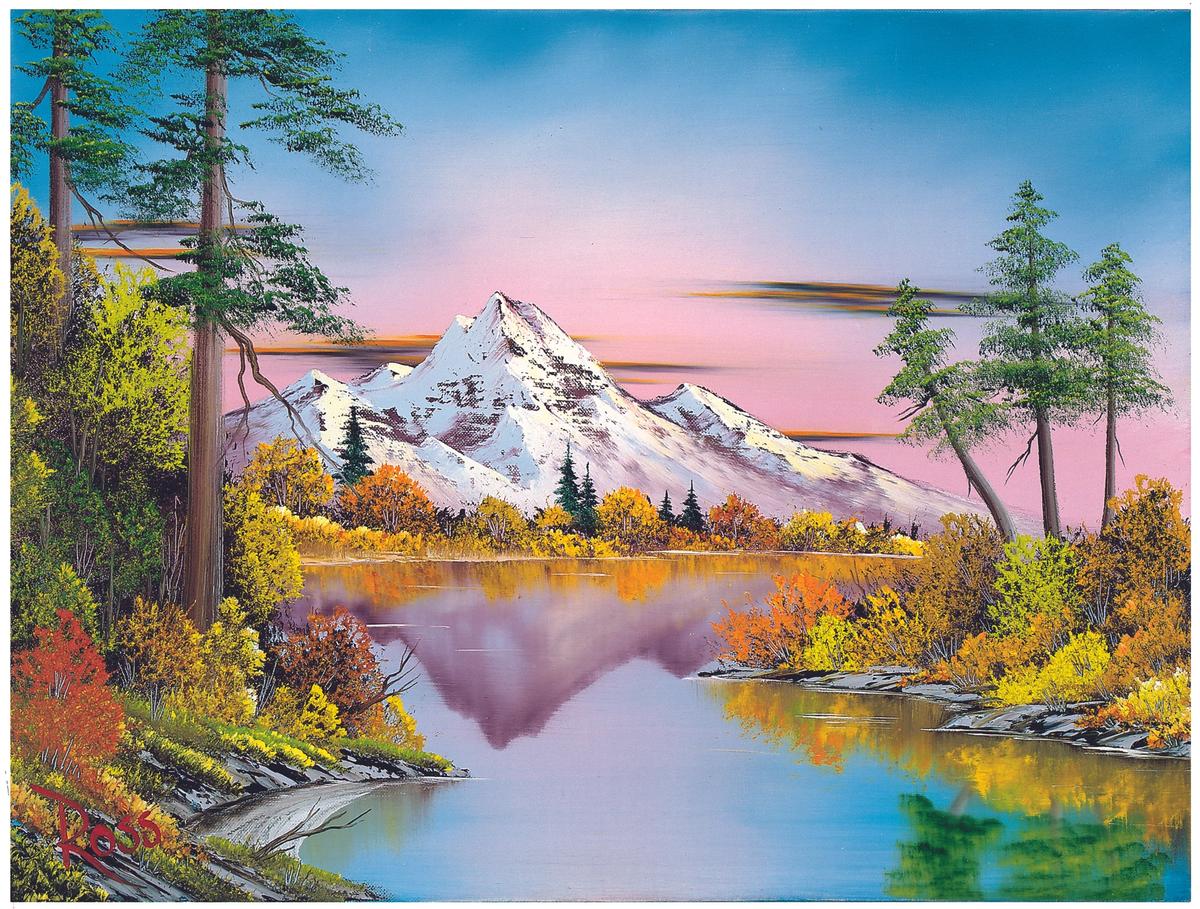Why has it taken art museums so long to show the work of Bob Ross, the late, legendary 1980s TV painter beloved by millions? A new group show in Chicago is aiming to change that and move Ross’s evaluation from the king of kitsch to a conceptual artist. New Age, New Age: Strategies for Survival, at the DePaul Art Museum in Chicago (until 11 August), positions Ross not as a mere novelty but as the forefather of a newer self-help trend in contemporary art. Four oil landscapes created by Ross for his Joy of Painting TV show are exhibited alongside works by Rashid Johnson, Tony Oursler, Mai-Thu Perret, Robert Pruitt and others.
“Put aside your prejudices of Bob Ross and think of him as a true artist,” says the museum’s director and curator Julie Rodrigues Widholm, who likens the painter’s reputation to Frida Kahlo’s. “I’ve been interested in his [cultural] ubiquity yet distance from the art world.” Rodrigues Widholm’s curatorial provocation takes aim at art museums and the market to confront biases of taste, class and the practice of art therapy. “It’s what I might consider expanding the canon,” she says.
Ross’s main goal was to get people to paint their own paintings; he was a great teacher
Borrowing the paintings couldn’t have been easier for Rodrigues Widholm. She called the Bob Ross Company, which runs a painting school in New Smyrna Beach, Florida, and oversees the painter’s legendary licensing brand. Although he died in 1995, you can still get a Bob Ross toaster to burn his trademark permed hairdo onto your bread, for example.
The company keeps around 50 original paintings by Ross in its offices and school. A company spokeswomen, Sarah Strohl, confirmed that the Chicago show is Ross’s first in an art museum, and the second loan request ever. (The first was from the LBJ Presidential Library.) “Of course, Ross’s main goal was to get people to paint their own paintings; he was a great teacher,” Strohl reminds us.
His pedagogic talent, however, means authenticity is a tricky subject for Ross’s paintings, given that he literally taught millions of viewers to paint exactly like him, brushstroke by brushstroke. There are even certified Bob Ross instructors who can replicate his signature techniques.
In his lifetime, Ross sold many works to tourists in Alaska where he lived, gave many as gifts and donated them to public TV charities. He could finish an oil painting in under 30 minutes, often painting the exact scene at least three times for the TV tapings.
Ross’s market is also largely untested. To find a Ross painting for sale today you would have to turn to risky private sales, or to eBay, where a couple of successful auctions made $18,900 and $12,633, according to Jessie Schiewe on the OK Whatever website. But forgeries abound: the Bob Ross Company says it will authenticate any painting, which could become an overwhelming task if every suburban home suddenly finds a Ross in its den.
Instead, Rodrigues Widholm wants to focus on the “cultural, intellectual and aesthetic value” of Ross’s work. As a US Air Force veteran who painted “happy little clouds” and offered inspirational on-air advice while he worked, Ross represents a shift in post-war art away from suffering and trauma, away from irony and academicism, toward optimism, fantasy, community healing and teaching. It turns out Ross is right in line with contemporary art movements.


